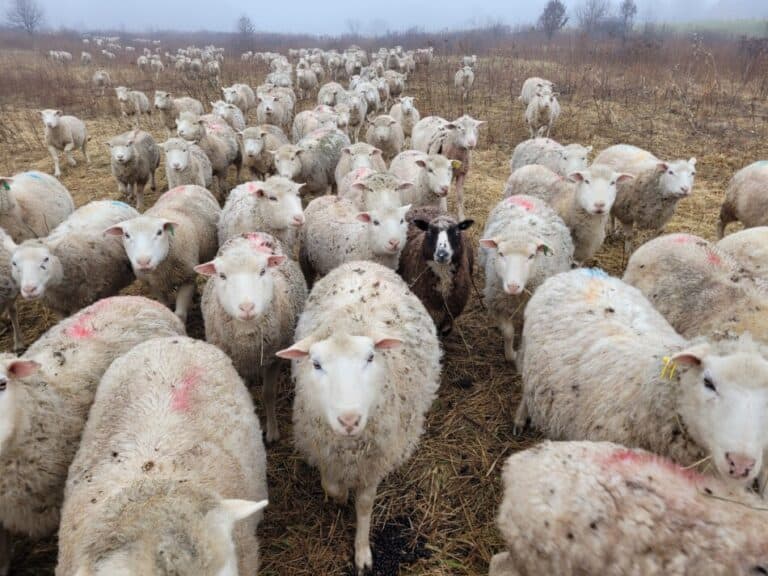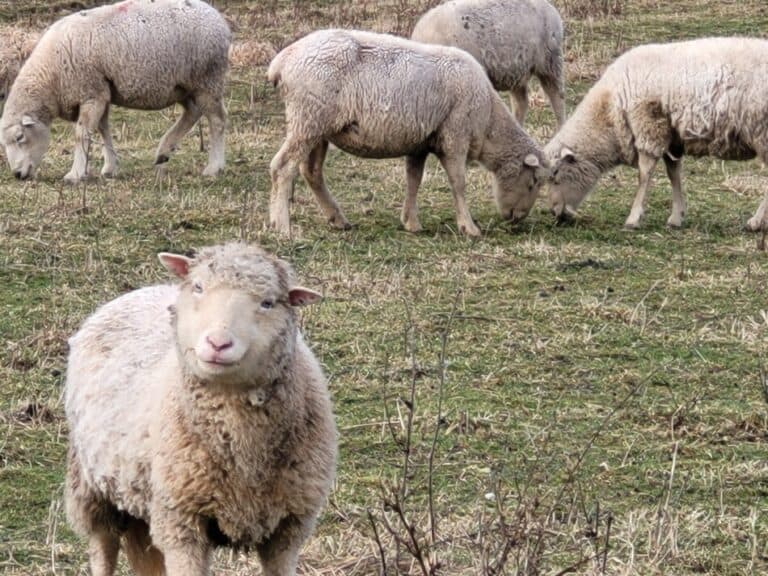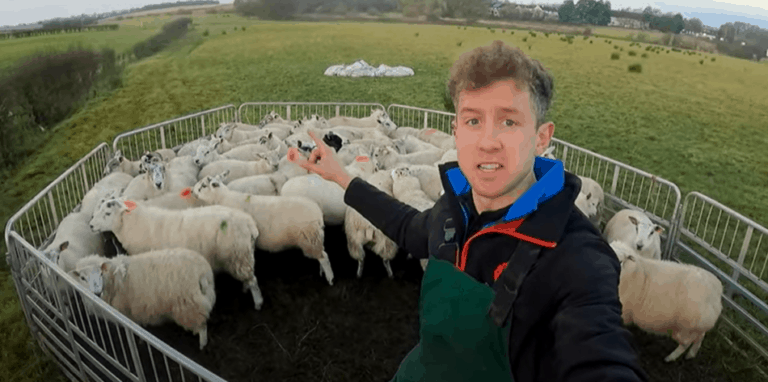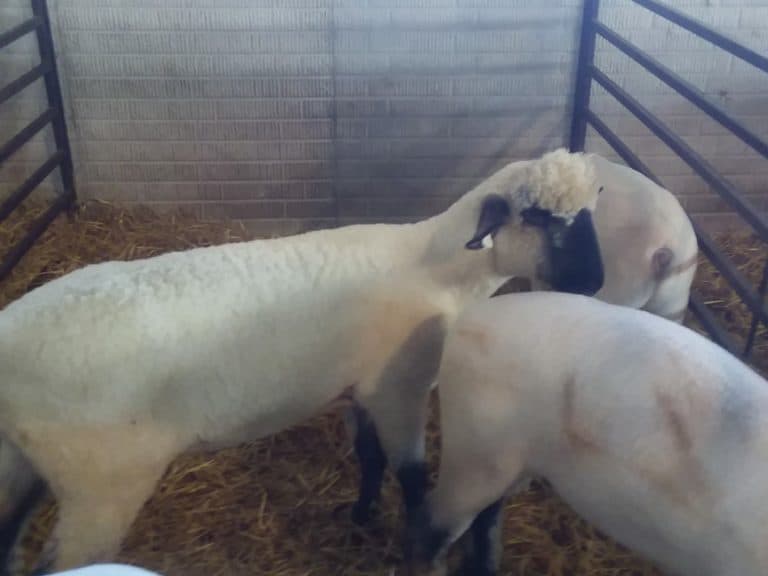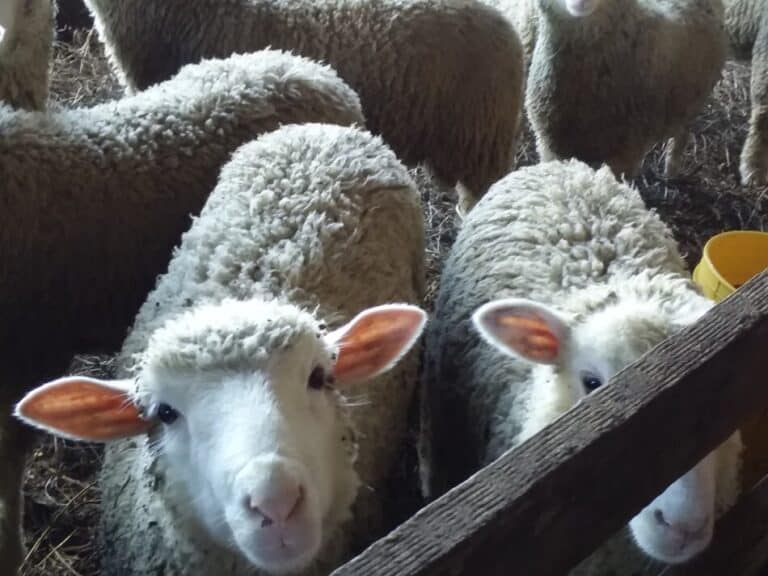Getting Started With Sheep As A Business
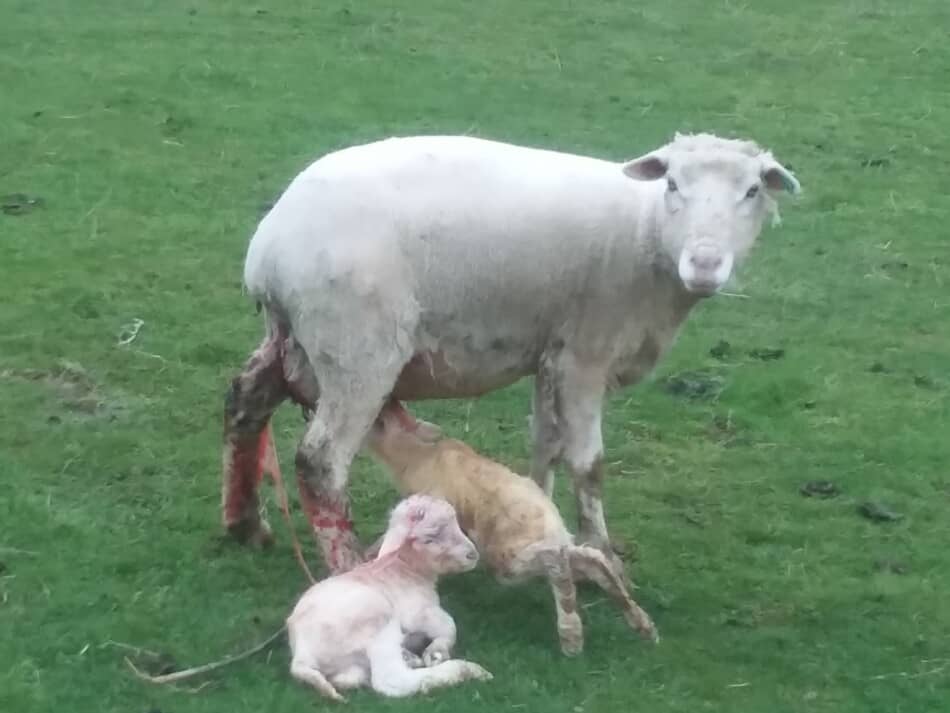
Sheep are the new up and coming livestock with a lot of folks looking into getting started with a flock of their own. But what are the first steps? What do you need to know in order to set up a successful sheep business?
To get started with sheep as a business, you need to know what lambs are selling for in your area, know what resources you have available for the flock and choose sheep that will produce lambs to fit your chosen market.
We raise sheep for a living and are seeing an increase in interest from folks thinking about getting into sheep, as well. Here are the things you need to consider before getting started with sheep as a business.
Sheep farming can be a profitable business
Sheep farming can be a profitable business, if you are able to keep costs down and manage the sheep in a way that keeps the sheep healthy and meets the demand for lamb in your area.
Here are some of the things you’ll need to figure out, before you get sheep:
- What resources do you have for the sheep operation? grass, fence, building, etc.
- Price of lambs in your area
- What type of lambs sell well
- Seasonality of lamb prices in your area
Raising Sheep For Profit is an article I wrote that goes over the numbers of sheep raising and gives you a budget to work with to see if raising sheep will work for you. The budget is based on our numbers but is easily adjusted to yours.
Evaluate your situation to see if sheep work for your area
Sheep will need feed, a place to stay and some management, which means they need your time and attention. What you decide to feed them and where they stay depend upon your situation. Sheep needing your time is a constant.
What are the sheep going to eat?
The main thing to know about feeding sheep is that sheep are better suited to areas that have plenty of grazing. Some sheep are more adventurous eater than others, but overall, sheep are grass eaters.
- What’s available for the sheep to eat?
- Do you have pastures? If so, how much land do you have available?
- What does that land grow, both what forages and how much of it?
- What is your grazing season for the year?
- What will the sheep eat in the winter?
How Many Sheep Do You Need? shows you how to figure out the number of sheep your land can support based on the amount of forages you land produces.
If you have a neighbor who has sheep, stop by and ask about how many sheep they have per acre and how much hay they feed in the winter. This first hand information will go a long way toward helping you plan for your sheep.
We have the main flock outside all year and bring the lambs into the barn at weaning. Which means we are feeding mostly grass from mid April through mid November and mostly hay for the rest of the year.
Where are the sheep going to live?
Where are your sheep going to live? If you have pastures, you already know where your sheep will be hanging out, but if you plan to keep sheep inside or do more of a dry/exercise lot plan, you’ve got more planning to do.
Granted, most folks would be keeping sheep outside, we certainly do, but it is possible to raise happy and healthy sheep inside a barn, as long as the sheep are dry, it’s well ventilated and the sheep have plenty of room.
Of course, with sheep inside you are also now responsible for feeding them. What’s the feeding plan? Purchasing hay and probably some grain? Where will you get the hay and grain and for what price?

How many sheep will you be able to raise?
Now, if you don’t know already, you’ll need to figure up how many sheep you will be able to raise. This should be a number of sheep per acre that is common in your area.
Generally, the number of sheep you can have in an area is 5x the number of cattle that same area can support. For instance, if your area is normally has one cow on 10 acres then you will be able to support 5 sheep on 10 acres.
In my area, Ohio, the standard numbers are 5 sheep per acre, so if you had an acre yard you could fence it in and keep 5 sheep as lawnmowers.
Your state agronomy guide should help you figure this out. To find my state’s agronomy guide, I search “Ohio agronomy guide”. Your area will have something similar, click around to find the free online version.
Small Acreage Sheep is an article I wrote to give folks with a smaller land base some ideas of how to raise sheep with limited pasture area or even in your yard.
The number of sheep you can keep is strictly based on forage production, which you should already know from the “what are the sheep going to eat” section. If you skipped the math, go back and calculate this stuff out.
You can add sheep numbers by adding in hay to supplement the grass
I also want to remind you that the number of sheep you can raise is based on forage, not necessarily grass, meaning if you are willing to feed hay, you can have more sheep per acre.
I am specifically thinking of folks with little to no land, but who have a decent sized barn and want to raise sheep.
The catch here is overstocking your pasture will be hard on the land, increase parasites, and cost you more to raise the sheep, since you are increasing feed costs with hay or grain.
However, if you need more sheep to make your operation viable, you can add forage (in the form of hay, haylage or silage) to the system, as long as you have enough space to keep the sheep dry and comfortable otherwise.
Heavily stocking an area will require more management from you, but it is doable as long as you keep the sheep happy.
Know the price lambs are selling for in your area
Sheep farming hinges on selling lambs, usually market lambs, which are butcher ready lambs at the weight the customers of your area prefer.
You need to figure up the prices for lambs in your area. The easiest way to do this is to look at the market reports of an auction in your area, or something as close as possible, and see what the current prices are.
There is no definitive answer to price, it tends to be seasonal as well as vary with area.
For instance, we just sold a load of lambs for $225 each, that’s a pretty good price, since it’s mid December. We usually start selling in January, but this year price went up before the first of the year, so we sent some lambs that were ready.
How is the lamb price and seasonality in your area? Read How Much Will My Lambs Sell For? an article I wrote to show you how to read a market report and figure the lamb prices for your area.
Please, do not go any further until you have figured out the selling price and seasonality of lambs where you live.
This is a business, you must know the potential income you are working with before you can decide if sheep will work for you. Be sure to check back through the past few years of market reports and figure the price ranges.
How do I start sheep farming?
By now you should know if sheep will work for your farming situation and what the prices of lamb is in your area. Hopefully, you have done the math and feel that sheep will be a good business to get started with.
Now, how to start?
You need to know exactly what type and size of lambs you are trying to produce and when you need them.
Successful Farming: New Ideas For The Sheep Industry is an interesting article in an online magazine featuring three sheep operations in the U.S. that all serve different markets. Read through here for some ideas.
Know type and weight of lambs that sell best in your area
Since your main income will be from selling lambs, you need to see for yourself what type and size of lambs that are selling well in your area.
In our area a 55-60 pound, chunky little Cheviot cross lamb sells very well, they always top the sale. This weight group is very popular in our area and tons of folks are aiming to hit this market with their lambs.
We raise bigger lambs that finish out in the 80-100 pound range for folks who want cuts of meat, rather than whole lambs, like the Cheviot lambs.
Our lambs take longer to reach market weight, which has them selling later in the year when prices are normally much higher than that of the lambs sold directly off of pasture in the fall.
These are just two examples of type and sizes of lambs that buyers want. What is the type of lamb that sells the best in your area? What size do people want those lambs?
You also have the option of private sales, some folks do stunningly well privately selling all of their lambs, so this is a great option for you if you have customers in your area.
Each group of people have differing ideas of the ideal lamb, so make sure you know what the folks in your area want and what they are willing to pay.
Pros And Cons Of Raising Sheep goes over some of the things you’ll want to think about before getting your first flock.
Know when you will sell lambs
I’ve mentioned it earlier, but since it’s important, we’ll look into it again. You need to have a plan of when you sell your lambs, specifically which month or time of the year.
Your area will have a “glut” season for any livestock. This is when all of the farmers are selling their market animals for the year.
Not too surprisingly, prices during the glut are low because of all the lambs going to the sale at the same time, the supply is high, so the price per lamb will be lower.
The opposite is also true, when lambs in your area are not normally ready for market, in the off season, the prices will be higher, since there are less lambs for the buyers.
Seasonality of lamb prices is usually tied to grass growth
Normally, the seasonality of prices is directly related to grass growth. Lambs are born in the spring, grow through the summer and sell in the fall.
This is a very normal pattern that most folks will follow, which also means that anyone using this plan will automatically be selling their lambs in the glut.
If you want higher prices for your sheep, you need to figure out what the glut for your area is and then sell at a different time. This is why we feed our lambs, to keep them past the glut and sell at higher prices in the late winter.
Other folks are using sheep that breed year round, having the lambs born in the barn, feeding them a creep feed to get the most growth and selling the 50-60 pounders that are popular in my area.
Sheep Creep Feeder is one of my articles going over your options to creep feed your lambs.
These folks want their money back as quickly as possible and do it by selling smaller, well finished lambs that always sell well, or sell these lambs at the less popular times of the year for an additional bump in price.
Whichever way you choose to set up your business, know that nothing is perfect. All decisions require you to weigh the good and the bad and decide which one works best for you.
For example: the sheep that require the least extra work are the sheep that follow the normal pattern and sell in the glut. If you want the easiest plan, this is probably it. It is also likely to be the least profitable.
If you want to sell off season lambs, you’ll get more money for the lambs, but it will require more work and facilities on your part.
Selling direct to customers will likely get you the most money per lamb, but it takes work to find the customers and work out an arrangement that keeps both of you happy.
Choose the type of sheep that will fit your needs
Finally, you need to pick the sheep that will fit your needs. The ideal sheep for you will produce the lambs you are wanting to sell at the times you are wanting to sell them.
Best Sheep For Beginners gives you some breed ideas.
Your ideal sheep could be purebred or cross. The breed is not the main thing you should be picking on, it’s what the sheep can do and does it fit your needs.
If you are stuck on one breed and want it no matter what, know that you are probably not going to be able to get all of the things you want from your sheep business.
If that’s acceptable for you, choose the sheep breed first, then work with the characteristics of that breed. Since this is a business, I do not recommend choosing the breed first. Know your needs, then choose the breed that is a close match.
Sheep 201: Business Planning is a resource showing all of the paperwork you’ll want to have to make sure that your sheep business is a business and not just a hobby, meaning it will make you money, as intended.
